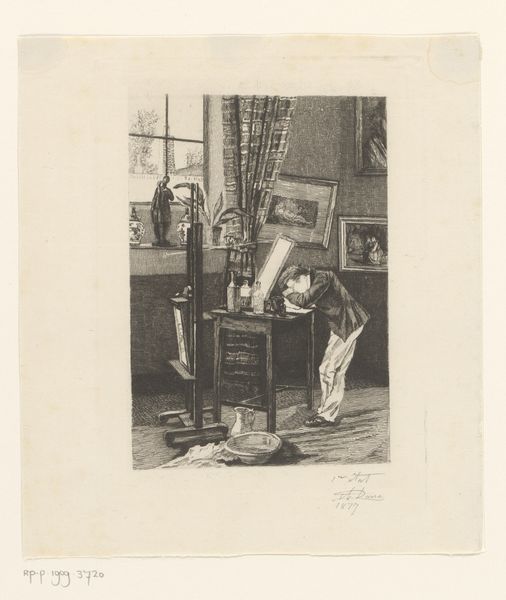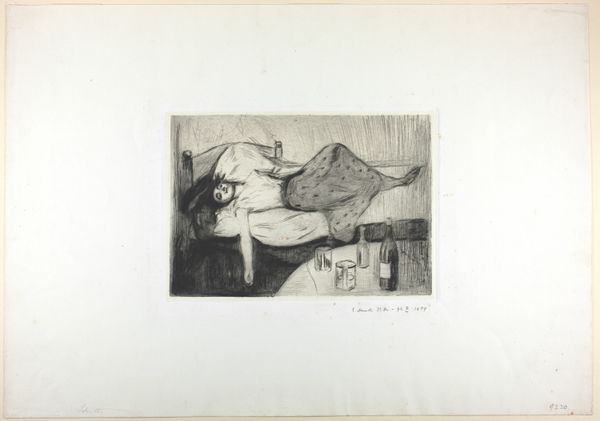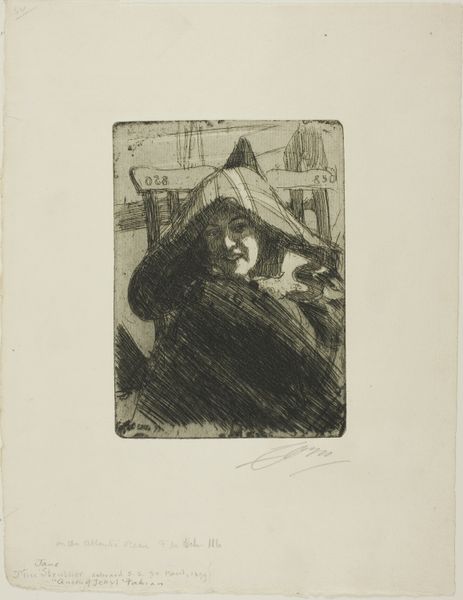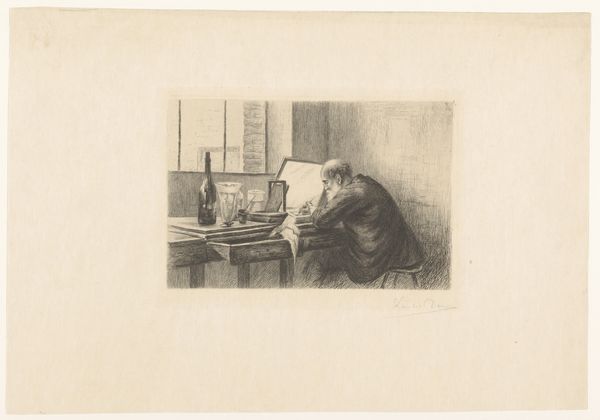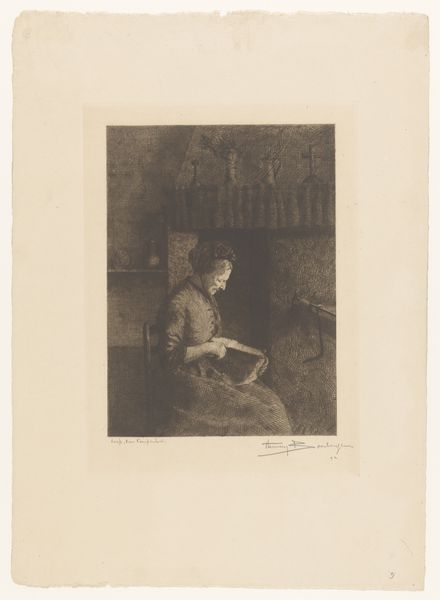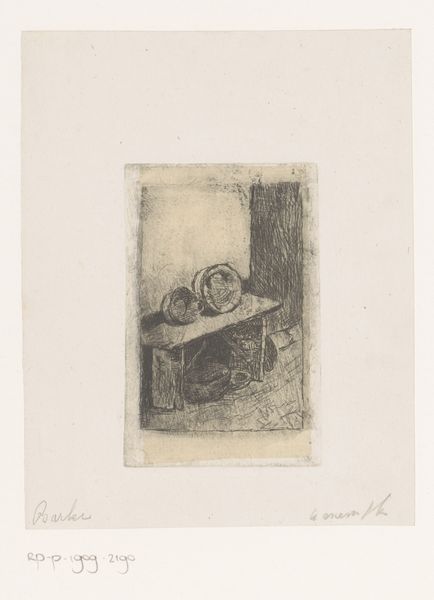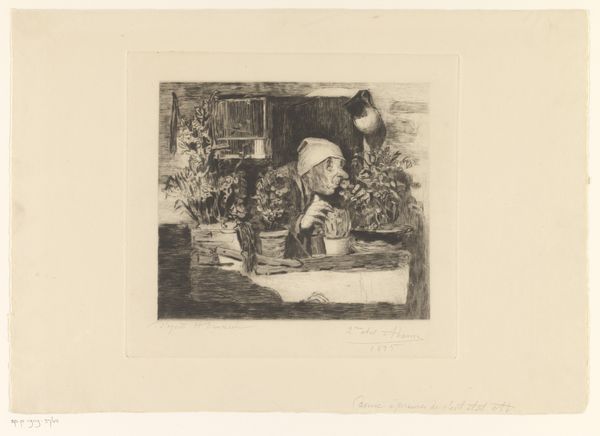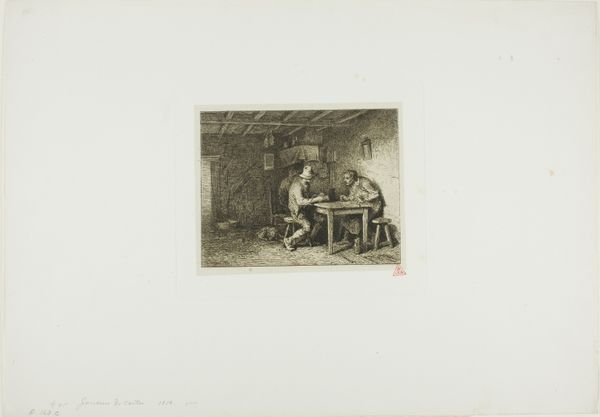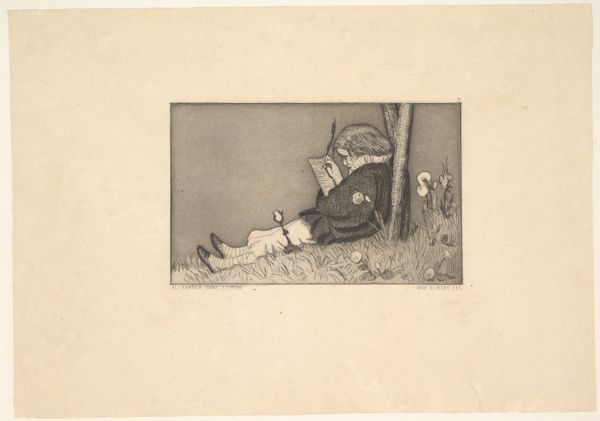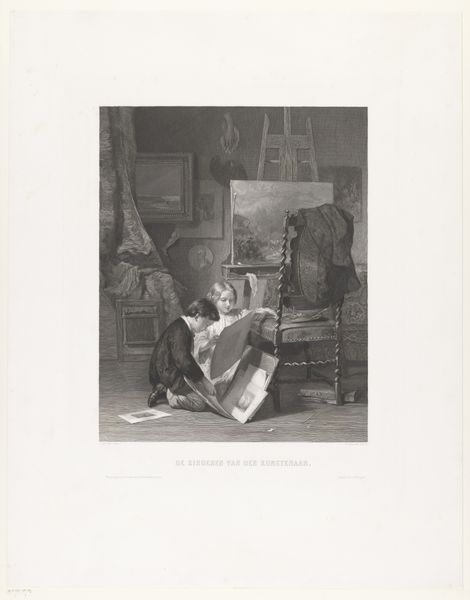
print, etching
#
portrait
# print
#
impressionism
#
etching
#
genre-painting
Dimensions: height 158 mm, width 196 mm
Copyright: Rijks Museum: Open Domain
Curator: This is Norbert Goeneutte’s “Portret van Henri Charles Guérard in zijn atelier,” a work from 1888 currently held in the Rijksmuseum. It depicts Henri Charles Guérard in his studio. What strikes you initially? Editor: There’s a captivating sense of quiet industry. The etching technique, with its delicate lines, evokes a soft, almost contemplative atmosphere. The limited tonal range lends it a kind of timeless quality. Curator: Considering the period, late 19th century France, there is definitely an element of the working class entering the sphere of art as both the subject, and in some cases, the creator. This challenges previous artistic conventions that favored representations of the elite. We're seeing art become a more democratized space. Editor: Indeed. And look at how Goeneutte employs hatching and cross-hatching to define form and create depth. The distribution of light is expertly controlled, guiding the viewer’s eye. Note, for instance, the textures created to describe the printing press versus the delicate strokes which define Guérard's form. Curator: Absolutely. The portrayal of Guérard also provides insight into the artist’s identity during this epoch. His posture, his dedicated focus – it’s indicative of a society undergoing rapid industrial and social transformation, one in which artists are redefining their place and purpose. Gender is an important context here, with women still greatly struggling to gain the same level of access and acceptance. Editor: Yes, and what about the structural devices at play? The placement of the printing press is brilliant—anchoring the composition on the left and drawing a diagonal line of sight towards the figure of Guérard, positioned just right of center. The gaze then naturally falls upon the stack of framed works in the background. The space is expertly organized. Curator: Seeing an artist portray another artist provides another intriguing perspective. This allows for commentary on the community within Impressionism at that period. Editor: What I appreciate is Goeneutte’s command of light and shadow to build the image out. In effect, the print becomes almost sculptural through the sheer expert modulation of grayscale tone. Curator: Thinking about art production from a class and gender lens offers us insight not just into the represented scene but also to the broader political conditions influencing artistic creation and recognition. Editor: I agree. By understanding these techniques, we understand also Goeneutte's understanding of art-making—as an operation as intricate as that very press standing in the foreground. Curator: It is an enduring image, resonating with those questions even now. Editor: Agreed. The harmony of its design continues to beckon us, a demonstration of technical finesse as much as historical import.
Comments
No comments
Be the first to comment and join the conversation on the ultimate creative platform.
